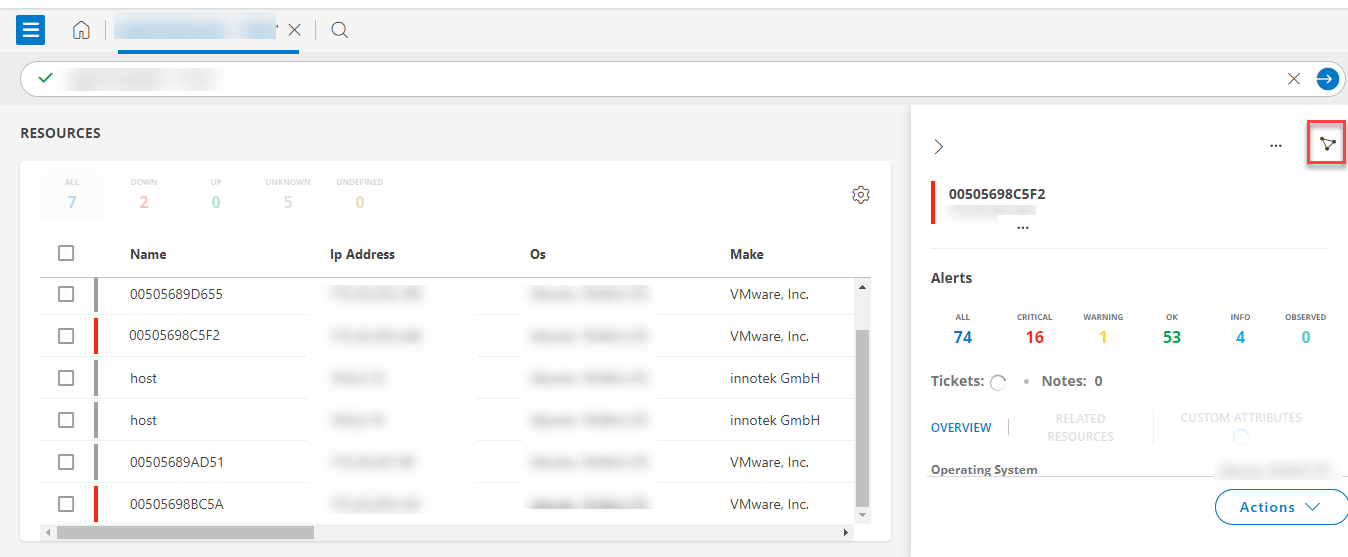The topology explorer provides visualization of resources in your infrastructure, their relationships, and availability, to help troubleshoot network-related issues.
Prerequisite
A user should have Device Manage and Device View permissions.
- Select the resource, and check the topology layout. The topology explorer is displayed with the base resource you selected and its neighbors including the connections based on Depth level.Note: following are the different Depth Levels (Supported Depth levels - 1,2,3,4,5)Example
Depth level 1 : (Source Device)

Depth Level 3 :

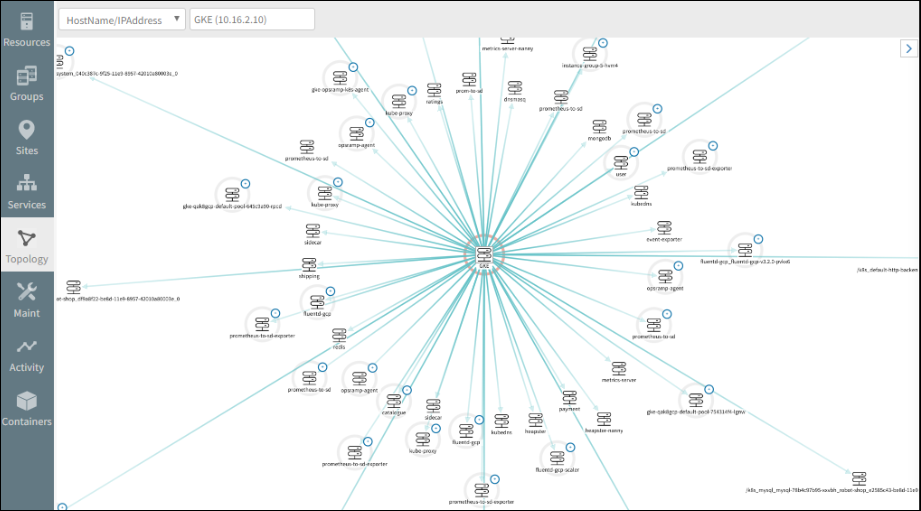
Source
Availability of source is based on the infrastructure. Source has five availability state, which are as follows:
- Up
- Down
- Undefined
- Unknown
- Default
Link
Notes:
- Click anywhere on a link (on a line) to view the Source and Target interface details.
Following is the information with description:
| Object Name | Details | Description |
|---|---|---|
| Source | Name | Name of the source |
| OS | OS name of the device. | |
| Make | Make details of the device. | |
| Model | Model name of the device. | |
| SerialNumber | Serial name of the device. | |
| Alerts | Alert information. Note: You can click View All, to check all the alert details. | |
| Interfaces | Check the details of the interface. | |
| Neighbors | Check the details related to CDP or LLDP MIB information. | |
| Gateway Profile | Details related to the Gateway Profile. | |
| Target | Resource unmanaged | Information related to the target. |
| Link Properties | Protocol | Name of the device protocol. |
| VLAN | Number of VLAN is displayed. | |
| Speed | Speed of the link is displayed. | |
| Source Interface | Information related to the source interface is displayed. | |
| Target Interface | Information regarding the Target interface. |
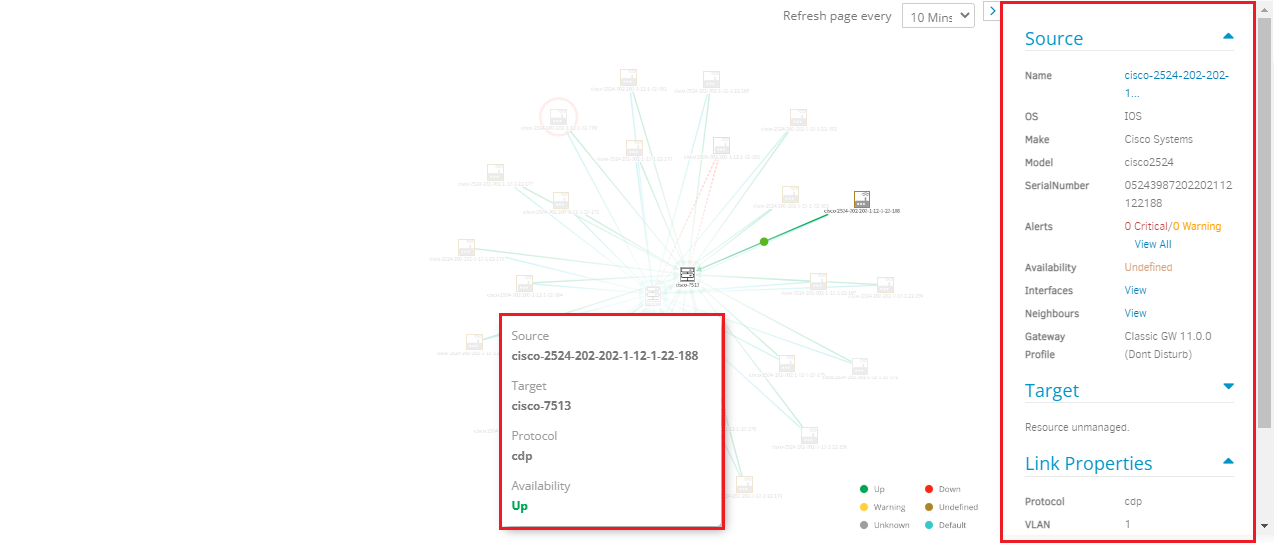
- Click a ___ resource to view more information about the resource, including resource availability status. Click the external link icon beside the resource name to view the resource details page.
Alibaba Topology
AWS Topology
After integrating AWS cloud services, use topology explorer to view the resource service dependencies.
- Click All Clients and select a client.
- Navigate to Infrastructure > Topology Maps.
- From the drop-down list, select AWS.
- All the resources in the client related to AWS will be displayed in the dropdown. Select the required resource to view the topology.
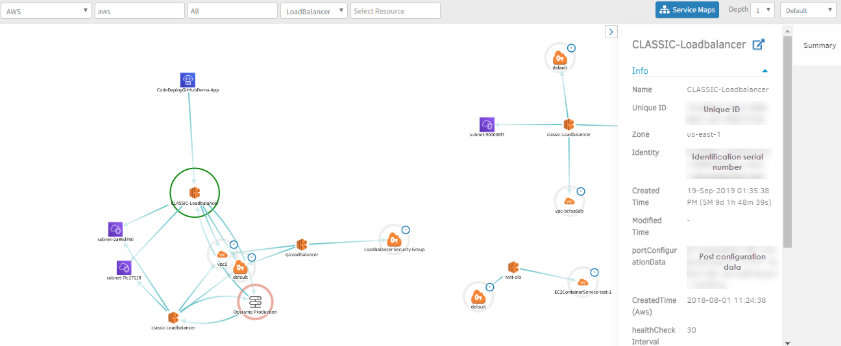
Azure Topology
After integrating Azure cloud services, use topology explorer to view the resource service dependencies.
- Click All Clients and select a client.
- Navigate to Infrastructure > Topology Maps.
- From the drop-down list, select Azure.
- All the resources in the client related to Azure will be displayed in the dropdown. Select the required resource to view the topology.
- ___ Click a resource to view more information about the resource. Click the resource name to view the resource details page. Alternatively, click the three dots (menu) icon to view the resource details page.
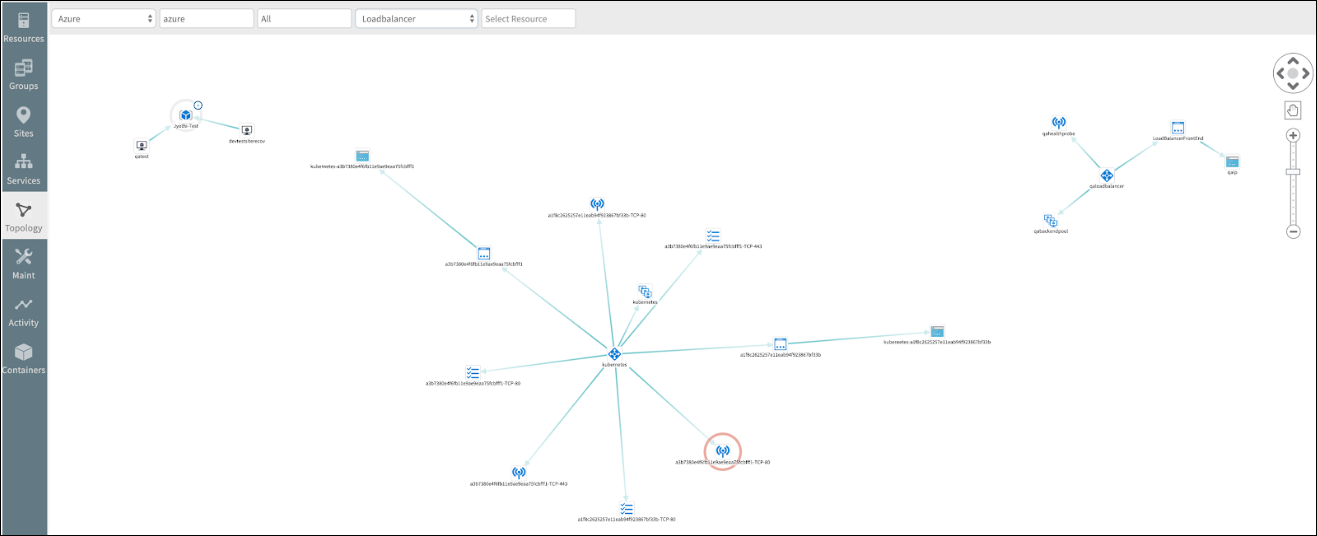
write more?
Google Cloud Topology
After integrating Google Cloud services, use topology explorer to view the resource service dependencies.
- Click All Clients and select a client.
- Navigate to Infrastructure > Topology Maps.
- From the drop-down list, select Google Cloud.
- To view the topology of a ___? Google instance, select the instance __ from the drop-down list.
- Click a resource to view more information about the resource. Click the resource name to view the resource details page. Alternatively, click the three dots (menu) icon to view the resource details page.
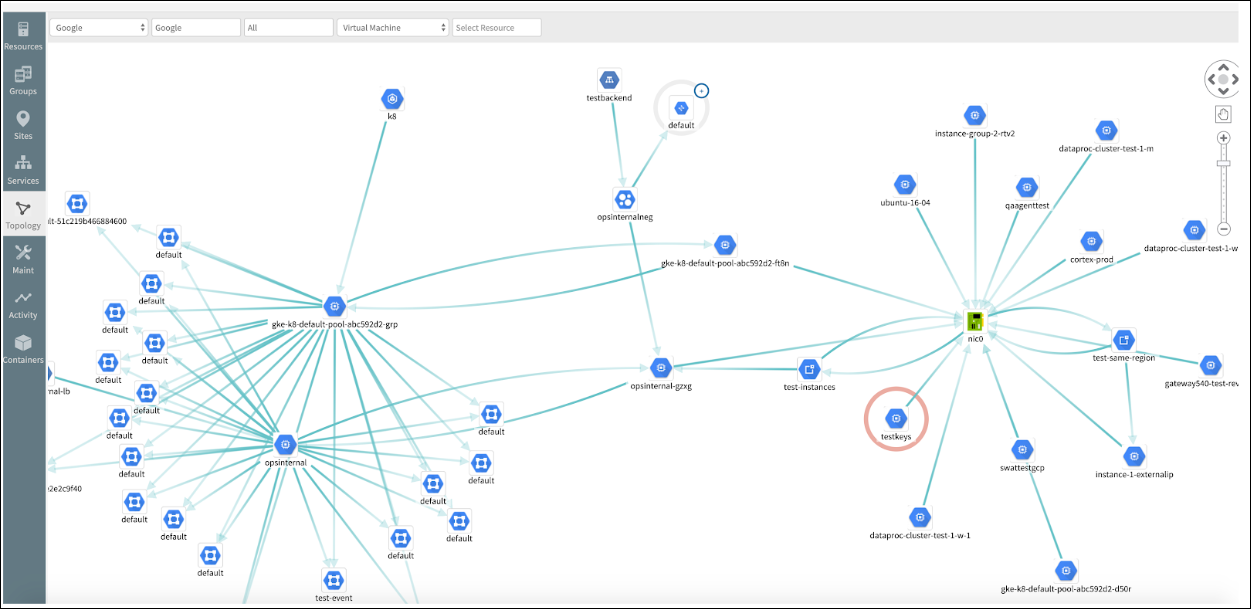
VMware Topology
The VMware environment consists of KVMs, vCenter, and ESXi hosts. After onboarding these resources, you can view the topology map containing the resources, including dependent hosts.
- Click All Clients and select a client.
- Navigate to Infrastructure > Topology Maps.
- From the drop-down list, select the entities ___ ?KVM, vCenter, or ESXi Host.
- Select the resource to display the topology.
- Click a resource to view more information about the resource. Click the resource name to view the resource details page. Alternatively, click the three dots (menu) icon to view the resource details page.
Resource
View the topology of a specific resource by providing the Resource Name. The filter facilitates the topology map for the SDK adapter__? with the Resource Name.
- Click All Clients and select a client.
- Navigate to Infrastructure > Topology Maps.
- From the drop-down list, select the entity as Resource.
- To view the topology ____ a resource.
Note: To acquire the resource name, navigate to Infrastructure > Resource, select a resource and click Attributes.

- Click the resource to view more information about the resource.
Following is the information with description:
| Object Name | Details | Description |
|---|---|---|
| Source | Name | Name of the source |
| OS | OS name of the device. | |
| Make | Make details of the device. | |
| Model | Model name of the device. | |
| SerialNumber | Serial name of the device | |
| Alerts | Alert information. Note: You can click View All, to check all the alert details. | |
| Interfaces | Check the details of the interface. | |
| Neighbors | Check the details related to CDP or LLDP MIB information. | |
| Gateway Profile | Details related to the Gateway Profile. | |
| Target | Name | Name of the Target |
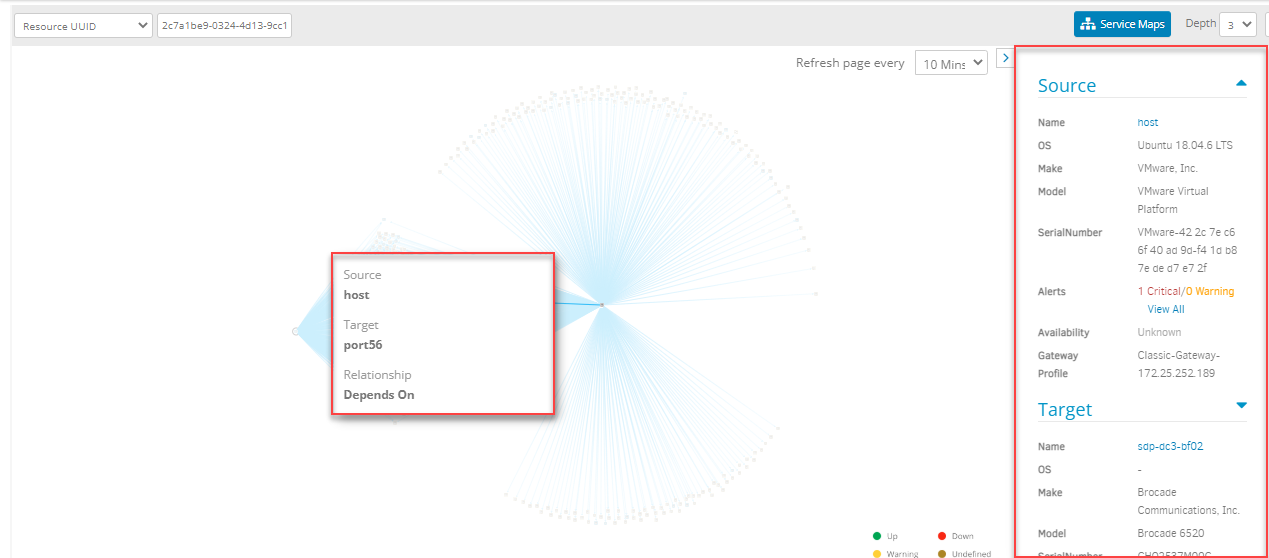
- Click a resource to view more information about the resource. Click the external link icon beside the resource name to view the resource details page.
Classic UI
You can navigate to the topology of a specific resource from the Classic UI resource details page or by navigating to the Infrastructure > Search > Resource side panel.
- Click All Clients and select a client.
- Navigate to Infrastructure > Search.
- The advanced search page is displayed.

- Click the search icon to look for a specific resource. The NEW VIEW tab is displayed.
Note: The NEW VIEW tab has an Advanced search box. A Recent Queries list is also displayed, if you searched for resources previously.

- Enter a query in the search field.
- From the list of resources displayed, select the target resource and click it.
A slide-out screen that contains the Overview tab and the following information is displayed:
| Functionality | Description |
|---|---|
| Operating System | Information of the operating system. |
| IP Address | Information of the IP address. |
| Make | Make of the device. |
| Model | Model number of the device. |
| Serial Number | Serial number of the device. |
| Resource Group | Resource group information related to the device. |
| Traits | Information about the traits installed in the device. |
- Click the Topology icon, This will redirect you to the topology map for the SDK adapter with the Resource UUID.
